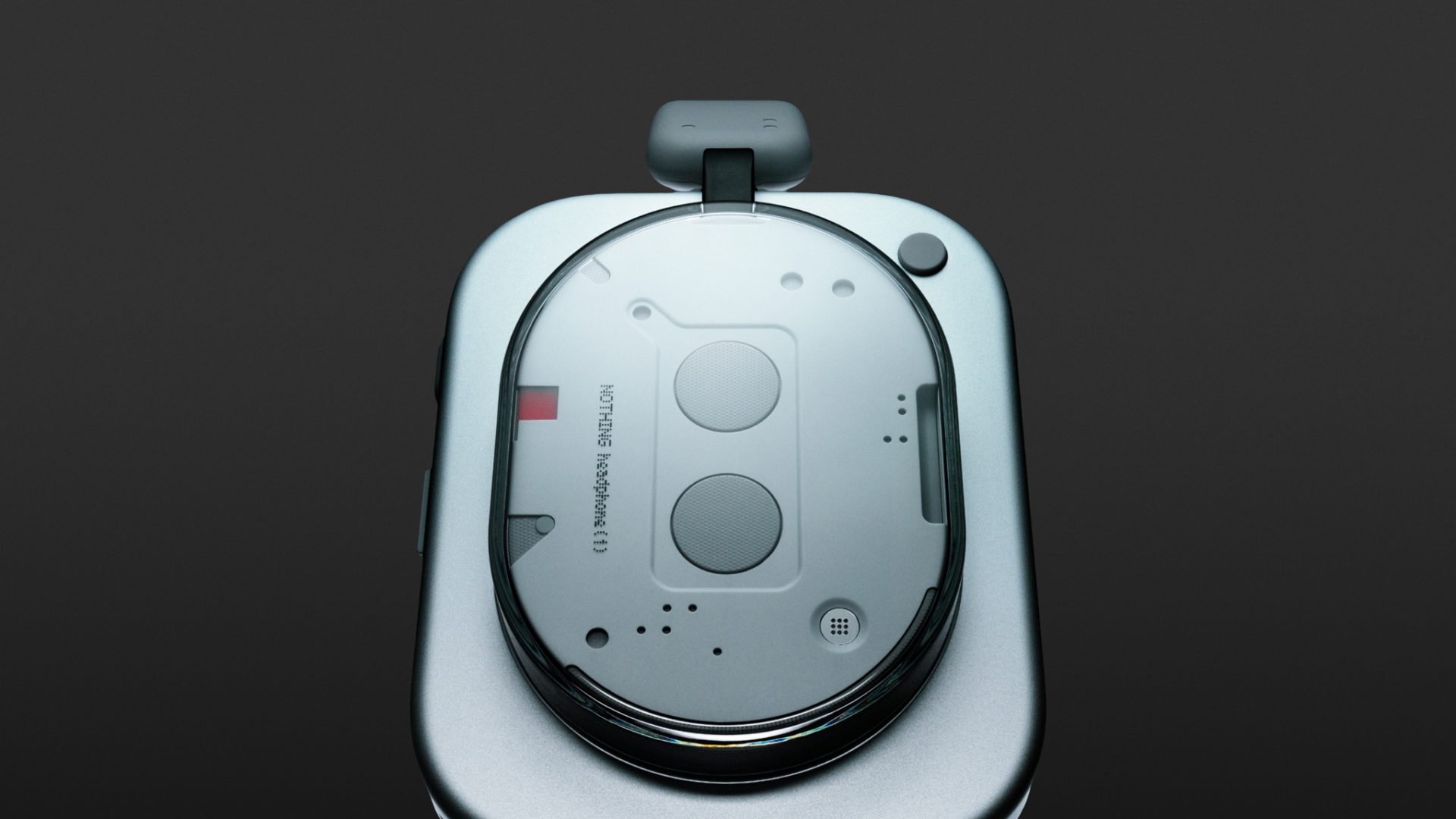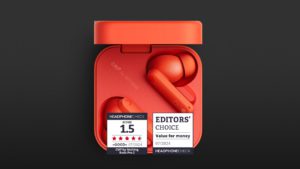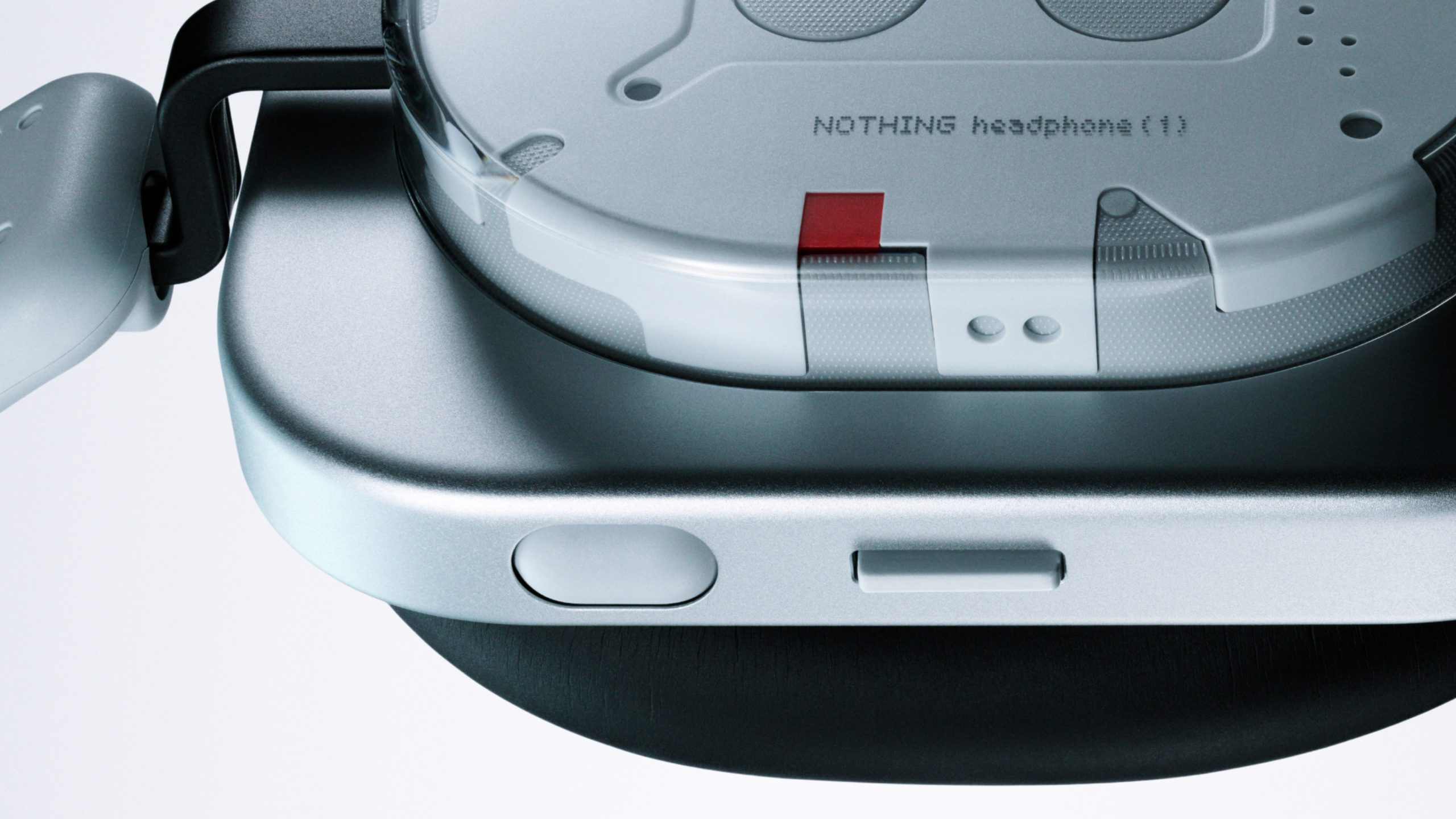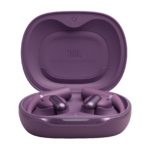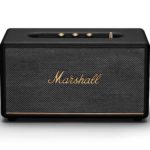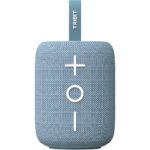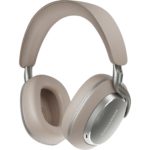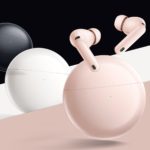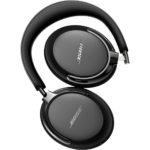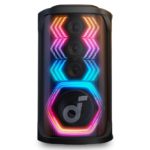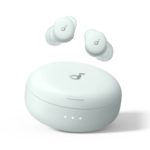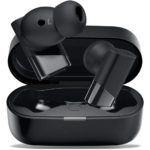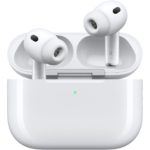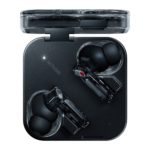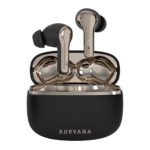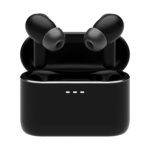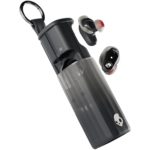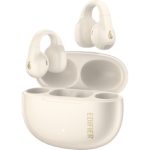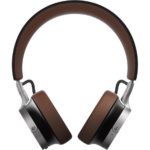With the Nothing Headphone (1), tech start-up Nothing delivers one of the most exciting audio highlights of 2025. Developed in collaboration with KEF, this over-ear headphone combines top-class sound, smart features and an extraordinary design. The only downside: the comfort of the headband and the breathability of the ear cushions could be improved. Nevertheless, the overall impression remains extremely positive – and bold users will be rewarded with one of the most innovative headphones of the season.
- Sound
- ANC & Transparency
- Features
- Build quality
- Price-performance ratio
- Head cushion could be more luxurious
- Heat build-up under the ear pads
- No USB audio
With the Nothing Headphone (1), a remarkable over-ear enters the sound stage, aiming to challenge the big players: unconventional design meets efficient noise cancelling, strong sound and thoughtful controls – all for under €300. Quo vadis, Sony, Apple and Bose?
What are you wearing on your ears?” – “Nothing!”
It almost sounds like a joke, but what emerged from the start-up founded by Carl Pei has shaken up the tech scene within just a few years. Whether it’s the striking semi-transparent smartphones or the equally stylish-looking in-ears and open-ears – Nothing achieves what no one else has: creating style-defining tech gadgets that are not only functional but also offer an incredibly good price-performance ratio. Not to mention Nothing’s sub-brand CMF, which has proven with the CMF by Nothing Buds Pro 2 that excellent headphones are possible for under €60.
Now follows the Nothing Headphone (1), the first over-ear headphone from the London-based company.
And it comes with adaptive noise cancellation, transparency mode, high-quality audio engine and a look that is as bold as it is polarising.
With a price of €299 (CHF 269), Nothing is not targeting casual listeners or bargain shoppers. Instead, the Nothing Headphone (1) aims to compete with established giants such as the Sony WH-1000XM6, Bose QC Ultra or even Apple AirPods Max – with a radically different design approach, the brand’s signature attention to detail, a custom-developed sound architecture in collaboration with KEF, and user interaction based on haptic controls rather than touch gestures.
But what’s really behind the striking exterior? Is the sound truly high-end – or just high-hype? Does the ANC work just as well in everyday life as it does on paper? How smooth is the app integration, and can this headphone, with its ambitious feature set, also convince in terms of battery life, comfort and durability?
In this review, we take a close look at the Nothing Headphone (1) from every angle – objectively, critically and thoroughly. So is it all just for show, or is there real engineering inside?
Design & build quality – Transparency meets technology
The most striking feature of the Nothing Headphone (1) is its transparent ear cups. What already seemed iconic with the earbuds is taken to a new level here: large, rectangular speaker pods with transparent rounded covers. Unlike some Nothing in-ears, you don’t get to see the inner mechanics or structural parts like screws, but you can admire the rear side of the acoustic chambers.
Material is key for comfort and durability – and here, Nothing, despite being a young company, demonstrates a high level of expertise: CNC-milled aluminium meets precision-moulded plastic. Small dots are added as design elements. Anyone familiar with Nothing knows that this dot design is an integral part of the brand and runs through the entire product range.
The ear pads are made of PU material that is not only soft but also, according to the manufacturer, oil and makeup-resistant. An important quality for long-term comfort – especially for users who wear their headphones for hours or frequently take them on and off while on the go.
Wearing comfort of the Nothing Headphone (1)
At first glance, the Nothing Headphone (1) feels robust but not bulky. The joints of the 90-degree rotatable speaker pods move smoothly. Weighing in at 329 g, the Nothing Headphone (1) isn’t exactly lightweight, but the mass is fairly well distributed on the head. And: Nothing is one of the few manufacturers to give its over-ear headphones an IP rating – thanks to IP52, the headphones are protected against dust and water splashes.
The stepless, notch-free plastic headband moves smoothly and retains its size during normal handling. Unlike many other headphones, the upper part of the headband is pushed into the lower rails. In practice, it takes a bit of getting used to adjusting the headphones properly. It’s a bit quicker and more intuitive with more conventional models. If you loosen the headband accordingly, you can feel the weight of the speaker pods on your ears.
The ear pads are replaceable and with inner dimensions of around 56 mm (height) and 40 mm (width), larger ears might not be fully enclosed. However, since the drivers are set fairly deep, uncomfortable contact is avoided.
To me, the entire headband construction and the way the ear pads are made aren’t quite ideal – it seems like Nothing deliberately wanted to do things differently here. For the Nothing Headphone (2), I would wish for a more luxurious head pad, maybe even with a small cut-out for the crown of the head – then I could wear the headphones for even longer. After about three hours, I had to take them off. Passive noise isolation is very good thanks to the dense ear pads, but their design leads to noticeable heat build-up and sweating under the cups after just 45 minutes in warm temperatures.
Operation & control – no touch gestures!
Nothing takes a more traditional approach to controls. Instead of error-prone touch gestures, it uses four clearly distinguishable, tactile control elements:
- Roller (rotary control) – for volume adjustment, play/pause and mode switching (ANC/transparency).
- Paddle (rocker switch) – for controlling tracks and calls (next track, previous track, accept/reject calls, fast-forward/rewind).
- Button – for switching spatial audio, toggling between apps (e.g. Spotify to Apple Music) or calling the voice assistant (including ChatGPT integration).
- Bluetooth pairing – a small button hidden inside the right ear cup allows pairing with new devices.
The result is a control concept that can be operated blindly – and doesn’t rely on skin conductivity or precise finger pressure.
- Nothing has opted for the classic approach of using physical buttons for its Headphones (1), instead dispensing with touch functionality.
In the test, the controls feel solid, with a good pressure point and clear feedback. The roller is precisely tuned, the paddle easy to feel, and the button well positioned. The learning curve is minimal – after just a few minutes, control becomes second nature.
App integration
The Nothing X app, available for Android and iOS, is the central hub for the Nothing Headphone (1). Seconds after opening, the app detects the headphones and displays status info such as battery level, active mode (ANC, transparency, off), connected device and, in a submenu, the current codec connection (e.g. LDAC). All features are quickly accessible without navigating through complex menus.
The Nothing X app offers numerous customisation options: an 8-band EQ, custom profile sharing, control configuration, device management, firmware updates and even news widgets. Despite the wealth of features, the interface remains pleasantly tidy.
A highlight from a sound perspective is the equalizer: in addition to four presets (“Balanced”, “More Bass”, “More Treble”, “Voice”), you can adjust bass, mids and highs in the “Simple” mode in 12 steps. If you want more control, the “Advanced” mode lets you fine-tune each of the 8 bands, even adjusting Q factor. Want to reduce harsh sibilance in a narrow frequency band? No problem with the Nothing Headphone (1)! The EQ enables fine tuning that’s far superior to other brands. You can share your presets or simply rely on the KEF-tuned profiles.
The ChatGPT voice assistant integration may seem gimmicky at first, but it can be useful – e.g. for saving voice notes or making smart queries hands-free. Everything is optional and non-intrusive.
Every button on the headphones is configurable via the app. This is especially useful for users with specific preferences (commuters, heavy users). The assignments remain clear and the functions are diverse – e.g. volume adjustment, voice assistant, channel switching or voice memos.
A unique feature of the Nothing Headphone (1) is the integration of the so-called Essential Space, which automatically syncs with the system when used with a Nothing Phone 3. A voice memo function lets you record ideas by holding down a button. These are then automatically saved and categorised in Essential Space.
For creatives, busy people or journalists, this could actually be useful – like an Evernote meets voice recorder without having to pull out your phone.
Another cool feature: With Channel Hop, you can jump between media apps to quickly access your favourite song or album.
Sound quality – precision meets emotion?
The Nothing Headphone (1) was developed in cooperation with KEF, a renowned British hi-fi expert with over 60 years of experience. Thanks to their expertise, the Headphone (1) is supposed to offer a sound profile that reproduces music as intended by the artist. The drivers, chambers and software were fine-tuned in KEF’s labs for ANC, transparency and spatial audio. The precision is there – but does this tuning also evoke emotion?
At the heart of the Nothing Headphone (1) beats a specially developed 40 mm driver with an 8.9 mm PU surround and nickel-coated diaphragm. This material combination promises especially clear treble reproduction and punchy, controlled bass. The linear suspension aims to minimise distortion – and the evenly textured dome prevents interference in high frequencies.
Listening tests reveal a quite balanced sound signature, leaning slightly warm and punchy without overwhelming bass. From classical music to podcasts, EDM and acoustic guitars – the Nothing (1) delivers a naturally warm soundstage with decent instrument separation and depth, although I would’ve liked a wider image. Bass reaches deep but never booms. If you want more punch, the app’s “Bass Enhance” boosts low-end frequencies in five steps.
Vocals are present without being overly forward. Treble is clear but never sharp. You can enjoy hours of fatigue-free listening – across all genres.
Sound differs slightly depending on mode: minimal changes between ANC and transparency, but wired playback sounds slightly “muddier”. Unlike the Sony WH-1000XM6 (review), the (1) requires power even for wired use – so playback with an empty battery isn’t possible. Also, USB-C audio is not supported.
The spatial audio feature with head-tracking works well – especially for movies or binaural recordings. It creates a convincingly immersive feel. But even here, let’s not exaggerate: sound localisation still happens in your head, not in front of you like with speakers. Nothing positions its spatial audio as a universal mode for music, film and games – but without support for native Dolby Atmos or 3D audio mastering. In practice, this results in a more two-dimensional stereo field: sounds shift slightly outward, but depth layering is lacking.
How good are ANC and transparency on the Nothing Headphone (1)?
With up to 42 dB of attenuation in adaptive ANC mode, the Nothing Headphone (1) aims for the top. Does it succeed? Short answer: Yes!
In public transport tests, the four-stage ANC worked excellently – engine noise, humming and low frequencies were almost completely eliminated. Voices were also well suppressed, though not entirely. Background hiss is minimal and only noticeable in complete silence. Nothing proves that highly effective noise cancelling is possible for under €300. Compared directly with Apple AirPods Max or Sony WH-1000XM6, differences are minor – Nothing isn’t far behind.
All three offer excellent noise suppression, with Sony being the most effective, followed by AirPods Max and Nothing in third. The adaptive system adjusts to wind, sudden changes in environment or conversations.
Another strength of the Nothing Headphone (1): even at maximum noise cancellation, ear pressure remains low. No diving bell feeling, no “popping” during switching.
The transparency mode impresses with its natural sound. Ambient noise is transmitted in real time – not muffled or mechanical, but lifelike. Ideal for commuting, train announcements or quick chats with colleagues. And the background hiss? Present, audible, but ok. Still: in this mode, AirPods Max still sound a bit more realistic with less static noise.
Battery life & charging behaviour – marathon runner or power hog?
According to Nothing, the (1) achieves up to 80 hours of playback with ANC off and AAC codec, and still 35 hours with ANC on. In LDAC mode, it drops to 54 and 30 hours respectively – which is normal due to higher data rates.
In everyday use with mixed activities (LDAC, ANC on, 60–70% volume, music and calls), I got around 30 hours before needing to recharge. Just 5 minutes on the charger gives 5 hours of playback (ANC off) – or 2.4 hours with ANC on. Very practical in daily life: shower quickly, grab coffee – and your headphones are ready again.
The non-removable battery is 1,040 mAh and generously sized. Full charging takes about 90 minutes – completely acceptable in this class.
Important: The Nothing Headphone (1) charges via USB-C but doesn’t support wireless charging – which might be a minor downside for some. Given the battery life, though, it’s a negligible one.
Conclusion
The Nothing Headphone (1) is more than a stylish accessory – it delivers an impressive combination of audio quality, functionality and design. The collaboration with KEF pays off: the sound impresses both subjectively and technically. And when it comes to ANC, transparency, app control, battery life and materials, Nothing delivers – sometimes with even more thoughtful features than its more expensive rivals.
There is criticism, however: wearing comfort and ear pad construction could be more breathable and luxurious.
But those willing to try something new will be rewarded with the Nothing Headphone (1) – surely one of the most exciting audio products of 2025.
The Headphone (1) is available in black and white for €299 | CHF 269. Global pre-sale starts on 4 July 2025 via nothing.tech and selected retailers. Open sale begins on 15 July 2025.
FAQ – Frequently Asked Questions about the Nothing Headphone (1)
- 1. Can I use the Nothing Headphone (1) without the app?
Yes, all basic functions (ANC, transparency, volume, playback) can be controlled directly via the physical controls. The app is mainly for fine-tuning and configuration – but it’s definitely worth using. - 2. Is the headphone compatible with iOS and Android?
Yes, it works with both. Android users additionally benefit from the LDAC codec, while iOS users are limited to AAC. - 3. How good is the transparency mode?
Quite natural. Voices and ambient sounds are clearly transmitted in real time. - 4. Is the headphone waterproof?
No, it’s not waterproof. But thanks to special seals (IP52 certified), it handles sweat, light moisture and normal environmental exposure with ease. - 5. Can I use the Nothing (1) for gaming?
Yes, thanks to low-latency mode it’s suitable for mobile gaming or video – but not entirely latency-free like wired headsets.
Technical specifications
- Ear couplingOver-ear
- Typeclosed
- Transducer principledynamic
- Frequency response (headphones)20 - 40,000 Hz
- Impedance16 ohms
- Weight without cable329 g, case 264 g g
What's in the box
- Mini jack cable
- USB-C charging cable
- Soft case
Special features
- Available in black and white
- BT version: 5.3
- BT codec: SBC, AAC, LDAC






